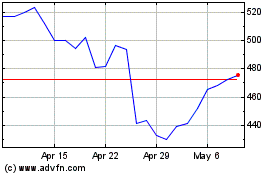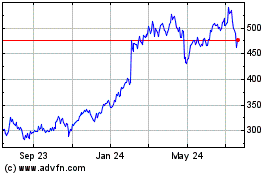By Joanna Stern
Live from a couch in Michigan, Nathaniel has been trying to
solve a Rubik's Cube for 10 minutes. Next! On the QVC set, host
Albany Irvin seems more excited about a camera deal than world
peace. Next! Somewhere in Texas, Amber is about to wash her hair.
Next! It's still zero-all in the Orlando Pride vs. Houston Dash
soccer game.
It's Saturday night and I'm channel surfing on... Facebook. I
even just finished my own groundbreaking live broadcast. My dog
eating dinner, naturally.
Live video is social media's flavor of the month, as you may
have noticed from a sudden surge of pesky "Live Now" Facebook
notifications. The tech world hasn't been this excited since the
selfie.
Facebook is investing big time. A few weeks ago, Mark Zuckerberg
announced new live broadcast features -- through a live broadcast,
of course. Twitter has been bragging about the momentum of its live
app, Periscope, and Google's YouTube is expected to announce its
own smartphone-based live video soon.
Why live video? My cynical take: It's the latest gimmick to get
us to record, share and watch more video. By 2020, 75% of the
world's mobile traffic will be video, according an ambitious
estimate by networking-equipment maker Cisco. The big brands want
to get the jump on any competition and keep us locked into their
money machines.
My optimistic take: It's a powerful, spontaneous way to share
your life and interact with people. Think of it as one-way video
chat with two-way texting. A reporter live in Syria can read a
viewer's suggestion to move a little to the left to get a better
view of the scene. A musician in his bedroom can take song
requests. Aunt Ida and the rest of the fam can tune in to Stacy's
dance recital from across the country.
It may very well be the future of live TV. But live doesn't
always mean thrilling, and for now, everything looks more "Wayne's
World" than "World News Tonight."
What to Watch
There are two genres of live video trending on Facebook and
Periscope. The first is mainstream media, stuff from broadcast
networks, newspapers, magazines and websites. You're likely to see
more of this on Facebook than on Periscope. Zuckerberg and Co. have
struck partnerships with media companies and celebrities and are
even working toward sports deals. Twitter is on this too: It has a
deal to stream Thursday NFL games. (Journal reporters have
broadcast live on Facebook, but the company has no live video
partnership with the company.)
The second is what I call Main Street media. This is the real
reality TV: the physical trainer who provides health tips on his
daily walk, the lawyer who gives legal advice from his office, the
surfer who takes you to the 10-foot swell. And yes, the person who
feels the need to share their lunch burrito.
There's just a slight problem right now: The stuff coming out of
the first category looks as low-quality as the second -- primarily
one person walking around, holding a phone. Parts of a "Good
Morning America" stream I watched looked like deleted scenes from
"The Blair Witch Project." The content was great -- Hillary Clinton
answered live questions -- but before that, we saw the backs of
people's heads, the floor, the host's microphone.
The raw, "authentic" look is somewhat by design, but the
production values should improve, says a Facebook spokeswoman. New
software tools will allow for multiple cameras and on-screen
graphics. Ultimately, it may end up looking a lot like what you see
on TV. Livestream's Facebook-friendly $400 wide-angle Mevo camera,
due this summer, will allow low-budget broadcasters to cut to
different camera angles.
A less easy problem to solve? Much of the content feels
pointless. Buzzfeed's infamous watermelon bursting video hit nearly
a million live viewers. Fortune had reporters try protein bars made
from dead insects.
Where can you catch live streams? Facebook started putting them
at the top of your news feed -- whether you like it or not. You can
also find out about them through the dreaded notifications.
Facebook and Periscope alert you when someone you follow is
broadcasting. (If somebody's Facebook notifications are
intolerable, go to the notifications menu on the website -- not the
app -- click the down arrow on a specific notification and select
"Turn off live video notifications.")
Soon, you'll see a Live Video tab in the Facebook iPhone and
Android apps. Like Periscope, the area will surface the most
popular public videos currently in progress around the world, plus
streams from friends and people you follow. For now, you can go to
facebook.com/livemap to see many current public live broadcasts,
with the most popular ones highlighted. You can see them, but
unless you like the feed or comment on it, they can't see you.
I've found much of the content to be PG, but I've seen
occasional drug and profanity use. Facebook says it is growing its
global team of content monitors, and making it easier for users to
report misconduct.
What to Broadcast
So what about broadcasting live video yourself? Correct, nobody
wants to see your daily commute or your garage makeover. But maybe
you'll want to stream moments of your life instead of snapping a
photo or a short video. At the right place and time, it isn't as
crazy as you'd think.
Rule No. 1 of live streaming: Have a purpose. Show us a concert,
a breathtaking view, a ride on your electric scooter, your new
Wi-Fi connected juicer -- it's all about sharing something cool or
unique. I maintained 50 live viewers on a horse and buggy ride
through Central Park. But making kale salad? My viewership fell to
low single digits.
In Facebook's iPhone and Android apps, the live-broadcast button
-- a silhouette with two rings -- is a status-update option. (Can't
find it? Click on "Write.") Before you go live, it's extremely
important to choose who you're allowing to tune in.
Hey, teenage girls in Minnesota, I now know which boys you have
crushes on. Your public broadcast was right there on the live map.
I'm no predator, but that's a potentially dangerous situation for
them. The tool gives you the opportunity to choose your audience,
but it's just not clear enough what "public" means. And unlike past
privacy debates, this is not about words and pictures on a screen,
but live video, from within people's homes.
Facebook says it often educates users about privacy settings,
and by default users between the age of 13 and 17 can share only
with friends. They'll need to go into settings to enable posting to
a public audience.
Narrow your audience to just Friends or even further, to
specific groups or people. I didn't want to stream my family's
Passover Seder to the world, so I added some friends and family
members. (Periscope also has a private broadcast feature.)
Once you're on air, it can take a few minutes for your audience
to arrive. Wait for them: Their live comments and questions will
make the experience starkly different from a regular recorded
video. Have a conversation, answer viewer questions and be
yourself. Like Snapchat, this is your chance to present the raw,
unedited you. Just remember, streaming video will chew through your
data plan. If you can't hop on Wi-Fi, keep an eye on the time.
On Facebook, those who don't catch the live broadcast can watch
it later. It isn't clear enough, however, that the videos are no
longer live. Facebook is working to include earlier comments into
the playback, so it will be more obvious that the action already
happened. (On Periscope, playback expires after 24 hours. The
company is working to give videos longer shelf lives.)
You likely won't become the Oprah of live streaming. But if you
believe people out there would benefit from your professional
expertise in medical ethics or your keen knowledge of parrot mating
rituals, go live. It's that type of Main Street content I found
most compelling.
Now I need get back to a garage in Alabama, where some random
band is really rocking out.
Write to Joanna Stern at joanna.stern@wsj.com or on Twitter
@joannastern
(END) Dow Jones Newswires
April 26, 2016 13:46 ET (17:46 GMT)
Copyright (c) 2016 Dow Jones & Company, Inc.
Meta Platforms (NASDAQ:META)
Historical Stock Chart
From Mar 2024 to Apr 2024

Meta Platforms (NASDAQ:META)
Historical Stock Chart
From Apr 2023 to Apr 2024
